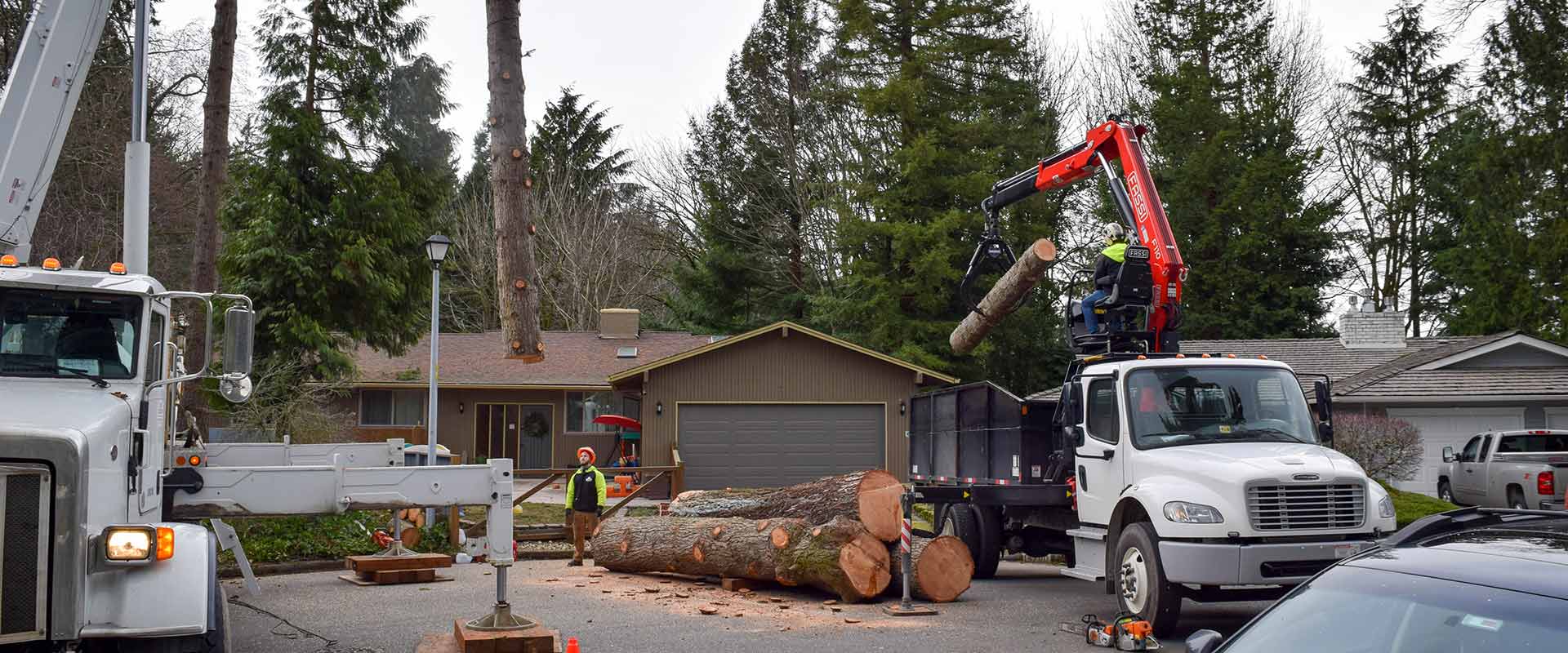Removing a tree might sound like a simple task. But when it’s towering over your house or tangled up in power lines, things can get risky fast. If you want to avoid the hazards and costs of accidents, it’s best to have the professionals conduct crane-assisted tree removal.
Whether dealing with a monster oak older than your dad or a storm-split pine, using a crane for tree removal makes the whole process smoother, quicker, and — most importantly — safer. Let’s break down how crane tree removal works, when you might need it, and why trusting the pros for crane tree removal services is worth every penny.
Why Tree Removal Isn’t Always Simple
Old-school tree removal is dangerous. When handling a task involving chainsaws, climbing gear, ropes, and gravity, one wrong move can lead to disaster. Falling limbs and collapsing trunks could land on your home or anyone unfortunate enough to be within range when the tree and its parts fall. Aside from serious injuries, you could be liable for damage if it hits your or your neighbors’ property.
In addition, if the tree is leaning dangerously close to a structure or rotten inside, the last thing you want is someone trying to cut it down piece by piece. Traditional methods just aren’t reliable in every situation.
What Is Crane Tree Removal?
Crane-assisted tree removal is exactly what it sounds like: using a crane to lift and remove sections of a tree, piece by piece. Instead of relying on gravity and rope tension, professionals carefully lift branches and trunks away by piece. This makes the removal process much more controlled, ultimately reducing the risks of property damage or injuries.
A certified crane operator and an arborist work together to remove parts of the tree. Someone will climb and attach straps or cables around a section of the tree. The crane lifts it and swings it safely to a drop zone, where it’s cut down further before being removed from your property.
Step-by-Step: The Crane Tree Removal Process
Professional crane tree removal services are tailored to each client’s properties. While some removal projects are fairly straightforward, some trees require additional precautions and steps to address hazards like nearby powerlines or potential damage to your home’s roof.
Typically, a crane-assisted tree removal project follows these steps:
- Inspection: Schedule an inspection with a professional arborist to assess the tree and plan the lift.
- Setup: The crane is positioned where there are no overhead obstacles, then it’s stabilized and extended.
- Strapping: A climber or lift operator straps sections to the crane.
- Cut and Lift: Each piece is cut and removed carefully before being maneuvered into the designated drop zone.
- Debris Removal: The ground crew cuts the wood into more manageable pieces for disposal.
Safety Benefits of Crane Tree Removal Service
When you have professionals doing the work and a crane for tree removal services, you can gain peace of mind knowing your property is safe.
- Reduced Risk to Workers and Property: With crane-assisted removal, no one is climbing dangerously high or dangling near power lines. There’s also far less risk of the tree crashing onto your home, driveway, or fence.
- Flexible Access: Got a backyard with no vehicle access? A crane can lift sections over your house or fence – no need to drop heavy branches where they can cause damage.
- Unmatched Precision and Control: A crane lets crews place limbs exactly where they want them. That’s huge when you’re working inches away from a roof or neighboring property.
When Is Crane-Assisted Tree Removal Needed?
Using a crane for tree removal is highly recommended for situations involving:
- Oversized or Dangerous Trees: If your tree is wider than a car or taller than your house, it’s a good candidate for crane tree removal service. Especially if it’s leaning, cracked, or unstable.
- Limited Ground Access: If your backyard does not have space for equipment, cranes can work from the street and lift over obstacles like your home.
- Storm Damage and Emergency Removal: After a brutal storm, you need quick, controlled removal. A crane helps remove debris safely without making things worse.
Working With Professionals: Why It Matters
Crane operators need proper licensing, while arborists understand tree biology and rigging. Together, they keep things running safely and efficiently.In addition, professional crews carry insurance in the rare chance that something goes wrong.
If an accident were to happen, working with professionals ensures you’re protected. Hiring a guy with a chainsaw and a ladder? Not so much.
Environmental Impact and Clean-Up
Aside from the safety benefits of professional crane tree removal services, you also enjoy environmental advantages:
- Less Ground Damage: Because trees are lifted out, your lawn stays intact. No deep ruts or torn-up flower beds from logs and branches being dropped or dragged around – saving you the lawn care costs to repair damage afterwards.
- Faster Job Completion: A job that might take up to three days with ropes and manpower can be done in a day with a crane. That means less noise, mess, and disruption for you and your neighbors.
Final Thoughts: Why You Shouldn’t DIY This Job
DIY projects can be fun, but removing a giant tree is not the time to play lumberjack. The risks are real. Using a crane for tree removal adds a layer of safety and control that just isn’t possible with ladders and ropes alone.
Get in touch with Eastside Tree Works to discuss the details of your project and schedule your initial inspection.

